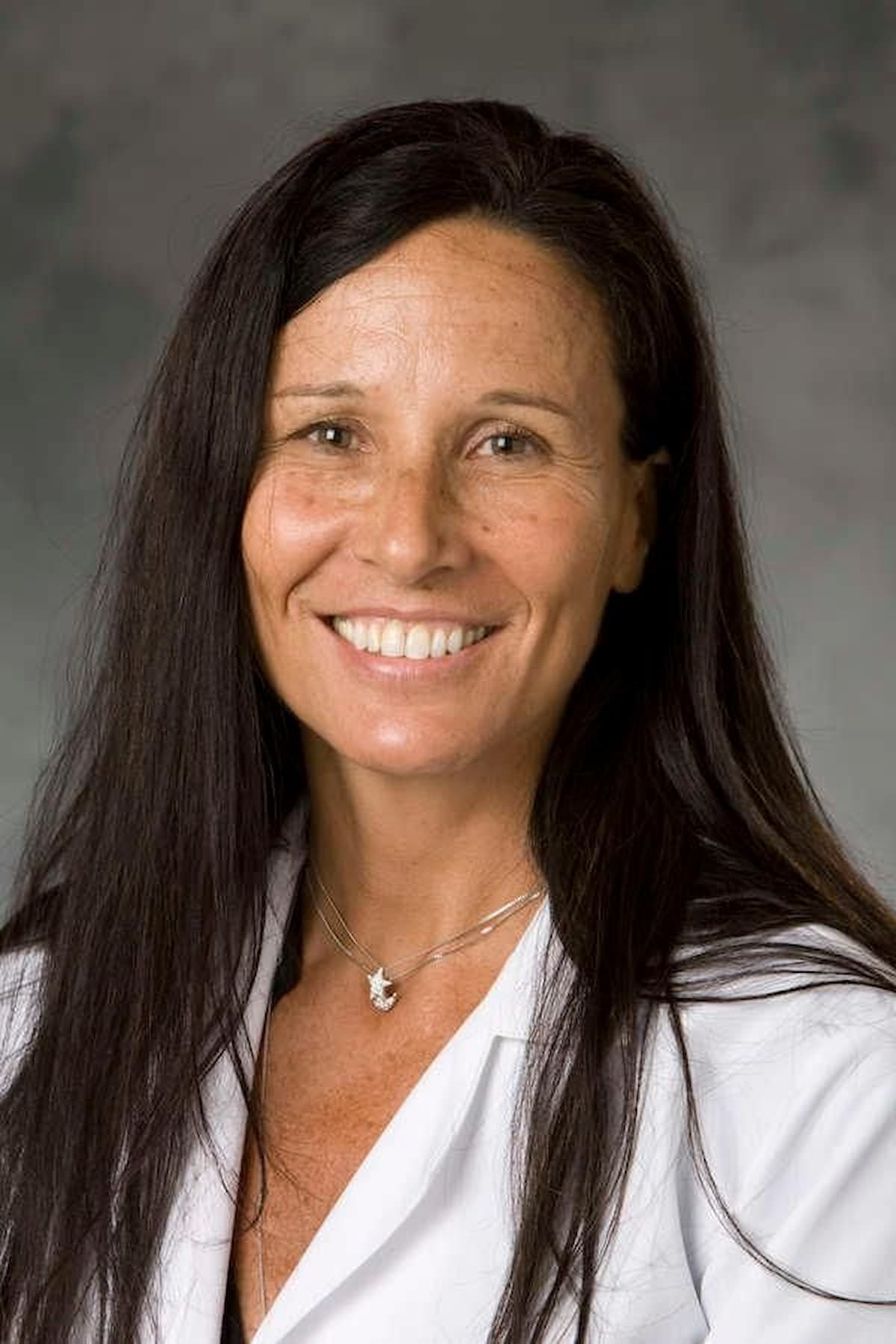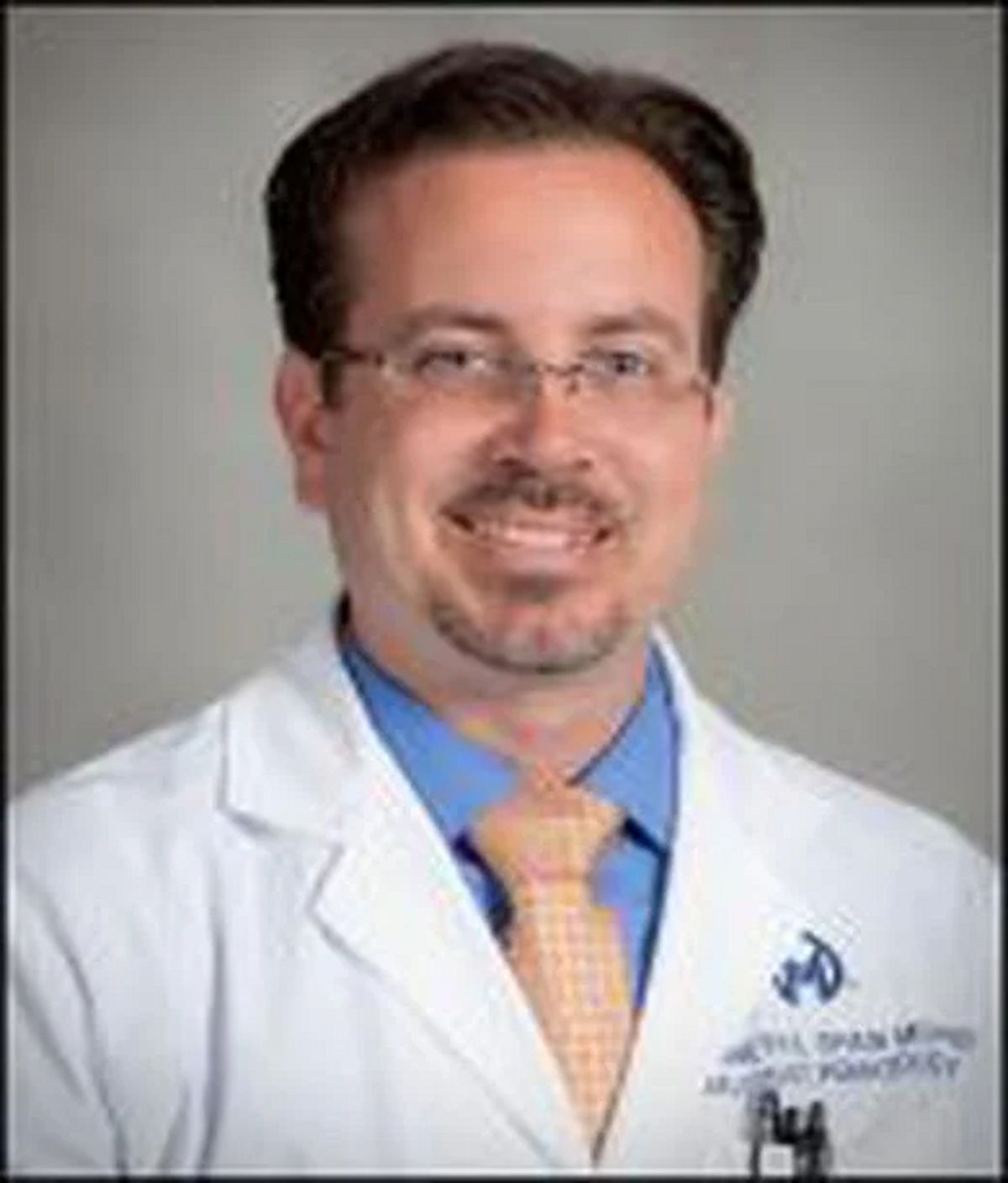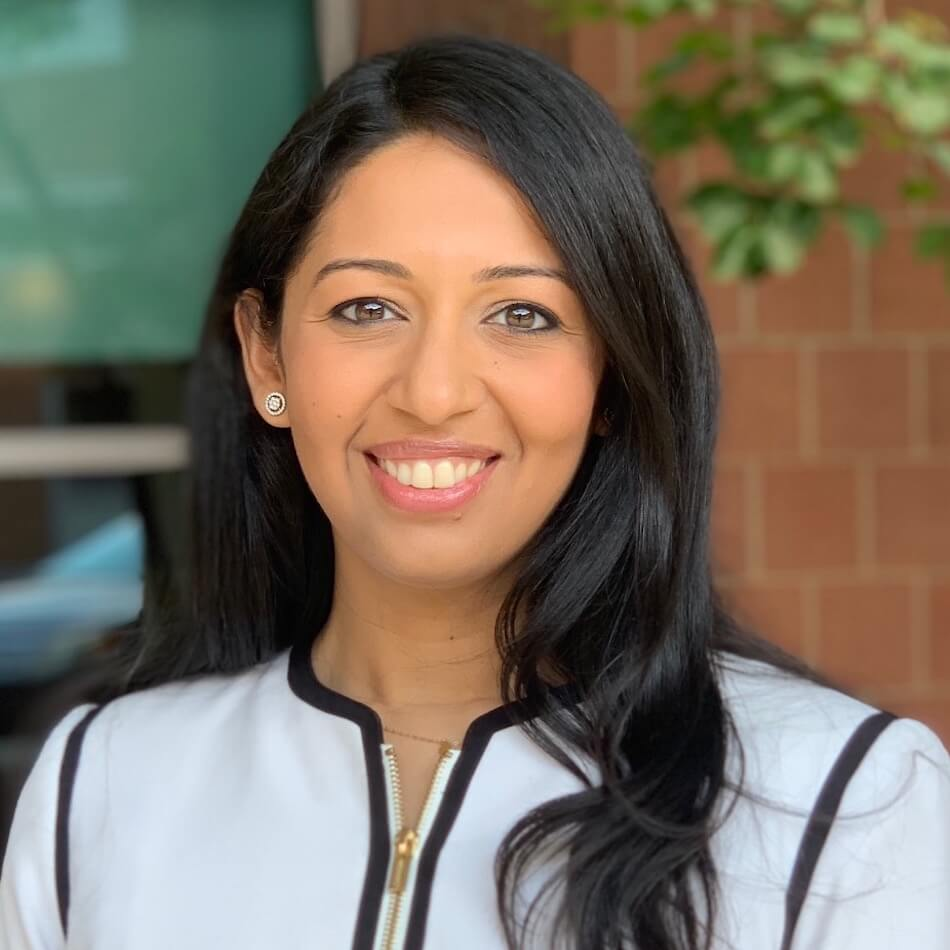Assessing CD38 Monoclonal Antibody-Based Regimens in NDMM
Treatment with daratumumab-based combination therapies may drive minimal residual disease conversion rates in patients with newly diagnosed multiple myeloma.
Cristina Gasparetto, MD, Professor of Medicine, Duke Cancer Institute

Amandeep Godara, MBBS, Assistant Professor, University of Utah Huntsman Cancer Center

Ken Shain, MD, PhD, Associate Member, Malignant Hematology, Tumor Biology, and the Chemical Biology and Molecular Medicine Program, Moffitt Cancer Center

Mansi Shah, MD, Assistant Professor of Medicine, Rutgers Robert Wood Johnson Medical School

In a recent Around the Practice program, CancerNetwork® hosted a panel discussion focused on CD38 monoclonal antibody treatment in patients with newly diagnosed multiple myeloma (NDMM). Initially, the panel discussed whether the emergence of daratumumab (Darzalex)-based quadruplet therapies signified its use as a new standard of care for this patient population. Subsequently, the role of daratumumab plus lenalidomide (Revlimid) as maintenance therapy following autologous stem cell transplantation (ASCT) was deliberated, followed by an assessment of clinical scenarios comparing the benefit between isatuximab (Sarclisa)- and daratumumab-based regimens. The panel concluded by discussing CD38 monoclonal antibody treatment benefits in patients with transplant-ineligible/deferred NDMM.
The panel was led by Cristina Gasparetto, MD, professor of medicine at Duke University School of Medicine. Panelists included Amandeep Godara, MBBS, assistant professor at the University of Utah Huntsman Cancer Institute; Ken Shain, MD, PhD, Associate Member, Malignant Hematology, Tumor Biology, and the Chemical Biology and Molecular Medicine Program at Moffitt Cancer Center; and Mansi Shah, MD, assistant professor of medicine at Rutgers Robert Wood Johnson Medical School.
Gasparetto: Is [daratumumab-based] quadruplet therapy becoming the standard of care?
Shain: Over the last few decades, we learned that if you add effective drugs to backbones, you will improve response rates [and] progression-free survival [PFS], and it [will] translate to overall survival [OS] advantages. [The phase 2 GRIFFIN trial (NCT02874742)], the [phase 3 CASSIOPEIA trial (NCT02541383)] happened around the same time.1,2 It was daratumumab, lenalidomide [Revlimid], bortezomib [Velcade], and dexamethasone [D-RVd] vs daratumumab, bortezomib, thalidomide [Thalomid], and dexamethasone [D-VTd]. Adding a CD38 antibody improved outcomes for patients. The question of [whether] 4 is better than 3 is not a question anymore. It’s now, how do we use it? Is this maximizing the responses in induction therapy? Does that change what we do later?
Those are questions we are asking now, but the data says 3 drugs [are] probably okay, those results are still good, but if we can have a smart drug and new mechanism of action––the CD38 being that part––is going to improve response rates, [and modify] our definition of high-risk. If you look at these 4-drug regimens, CD38 is 1 high-risk feature that might not be as significant as it was in the past. You are changing [what defines a] patient who is high-risk, which is one of our unmet needs. If we can make that number smaller, we are benefiting our patients.
Daratumumab [will need to be] added to our current 3-drug therapies. We have learned that daratumumab or isatuximab [or other] monoclonal CD38 antibodies added to these induction therapies are critical in the right patients. Not everybody can handle all 4 drugs or all full doses of 4 drugs.
Gasparetto: Transplant comes as first-line therapy. We are trying to improve transplant with a better induction. I know you are part of the [phase 3 AURIGA trial (NCT03901963)], and [that findings were presented] at the International Myeloma Society [IMS] Annual Meeting [in 2024].3 [With] a presentation soon to come about the benefit of the doublet maintenance, particularly in different patient subgroups: can you tell us more?
Shain: Let’s back up a little bit [and] talk about what AURIGA was. It’s a study that was looking at MRD conversion after transplant in a specific population. One, they had to be CD38-naïve. They did not get daratumumab as their induction therapy. They were transplanted, and they were not MRD-negative, [and] they [had a very good partial response or better]. They responded well but still had disease.
The question was, what does lenalidomide do on the baseline? With lenalidomide, historically, about 20% of patients convert to MRD-negative over the course of a year. We said, “what would daratumumab do?” The result that was presented at IMS and then published in Blood was patients went from 18.8% up to about a 50.5% MRD conversion rate overall. Adding daratumumab at this time was a good thing when it came to MRD conversion for those that were not already MRD-negative and did not have daratumumab in the front line.
The question [many] of us have is, do monoclonal [antibodies] cover all bases from a high-risk perspective and across different subtypes?What we looked at is the high-risk patient populations. If you take the new IMS high-risk features, 17p deletions, and 2 [other] high-risk features, 1p deletions and 1q amplification, added together all those populations will see benefits. Interestingly, [for] lenalidomide, the standard risk by itself was converted well in that standard-risk patient population. It did not do as well in those high-risk features. Daratumumab was driving that conversion rate, even in the high-risk patients.
Gasparetto: What do you think about using isatuximab vs daratumumab in the frontline setting for transplant-eligible NDMM?
Shah: I think of these anti-CD38 monoclonal antibodies as equivalent. I use them interchangeably, and there are some subgroups which may benefit from 1 vs the other, but I think that data are not robust, and it is a smaller number of patients. [The phase 3 IsKia trial (NCT04483739)] tried to answer that.4 In my mind, IsKia was trying to explore which proteosome inhibitor to use, and which anti-CD38 monoclonal antibody to use? It was based on the phase 2 FORTE trial (NCT02203643), which was a European study with 3 arms.5 FORTE established the safety of long-term carfilzomib (Kyprolis) in transplant-eligible patients. What IsKia did was expand upon that.
The trial design was for patients who were transplant-eligible, either using isatuximab, carfilzomib, lenalidomide, and dexamethasone [isa-KRd] vs carfilzomib, lenalidomide, and dexamethasone [KRd], and each arm received 4 cycles, followed by autologous stem cell transplantation, followed by 4 additional consolidation cycles, and then a long consolidation called consolidation light, where either arm received KRD or isa-KRD [at a modified schedule].
It was an important study, especially for those patients who were high-risk \, and that might be the population that requires a different proteasome inhibitor than bortezomib, and there were deep MRD-negative rates. They studied 10-5 and 10-6, and they were [relatively] equivalent, but 10-5 in the isa-KRd arm was [approximately] 77% compared with 67% [with KRd arm]. What stands out are patients who [have] high-risk cytogenetics, or patients traditionally considered high-risk, had an MRD-negativity rate of 77% vs 53% in the isa-KRd arm vs the KRd arm. These responses deepened over time, with ongoing light consolidation for almost a year. When similar patient populations are examined, IsKia answered which proteasome inhibitor should be used, potentially for patients who were high-risk. I do not know [if the] difference between daratumumab vs isatuximab made a big difference.
Gasparetto: The phase 3 GMMG-HD7 trial [NCT03617731] substitutes daratumumab with isatuximab, but with the same backbone.6 The study is designed differently: there is no consolidation. What do you think about this study?
Godara: Most of us believe that daratumumab and isatuximab could be used interchangeably for our patients. There are differences in mechanisms of action, but when we look at cross-trial comparisons between isatuximab and daratumumab, the differences that stand out are minor differences across the board. In terms of the GMMG-HD7 trial, this was 1 of the largest studies that was an early adopter of MRD as one of the primary end points.
We had an update on the GMMG-HD7 trial a few years ago, where we were presented with the MRD-negativity data post-induction. There are some differences compared with the other trials. GMMG-HD7 induction cycles were 6 weeks long. Once [approximately] 24 weeks of induction were done, they looked at the MRD negativity rates at 10-5. As expected, we saw higher MRD-negativity rates in patients who received isatuximab. Then comes the next question of those second randomizations, where patients have had induction [and] an autologous transplant.
What do we do for their maintenance? Do we give them isatuximab with lenalidomide, or do we give lenalidomide alone? That’s one of the questions that goes back to what the AURIGA trial is looking at, and what was done in the CASSOPEIA trial; what is the advantage? What are the benefits of having that anti-CD38 antibody included in the maintenance therapy? Some of the results will consolidate the knowledge that we are getting from the AURIGA trial, that when anti-CD38 monoclonal antibodies are used, we will see an improvement in PFS, and we will [likely] see improvements in MRD-negativity rates, and maybe see an increase in the number of patients who will maintain MRD-negativity.
Gasparetto: What did you think of the [phase 3 CEPHEUS trial (NCT04751877)]?7
Shah: [Currently,] I think of [patients] as proteasome [inhibitor] eligible or not, rather than transplant eligible or not. That depends on their frailty, and comorbidities, as well as biologic age, but that is less of a factor. These studies that we are talking about, like the CEPHEUS trial, are showing that. It was subcutaneous daratumumab with bortezomib, lenalidomide, and dexamethasone [D-VRd] vs VRd alone in a transplant-ineligible, but really a transplant-deferred, patient population up until the age of 80, and the primary objective was MRD-negativity.
The study had almost 400 patients. To point out a few things, bortezomib was given twice a week, and steroids were given 4 times a week in this trial. Bortezomib was [given] for 8 cycles, and then it was daratumumab with lenalidomide and dexamethasone that continued until intolerance or disease progression. The median age was about 70.
[I thought of them] as a transplant-eligible patient population, and they had low frailty scores. [There were a few] patients who were frail on this study, because if someone can tolerate twice weekly bortezomib, I do not think they are frail. Twenty-eight percent of patients had Revised International Staging System stage III [disease], and about 13% had high-risk cytogenetics. The way I think of CEPHEUS is as the phase 3 MAIA trial [NCT02252172] with the addition of bortezomib, and it is one of the first trials to evaluate MRD-negativity in this patient population.8 Overall, in the anti-CD38 containing arm, the MRD-negativity rates reached [approximately] 60% vs 40% [in the comparator arm]. [Nearly doubled] MRD-negativity, and it was sustained at 12 months. This also translated to a PFS benefit of [approximately] 81% vs about 70% in the VRd arm. To me, the [quadruplet therapies] are here to stay, and we should be using them for all patients.
Gasparetto: Are you able comment on the differences between CEPHEUS and the phase 3 IMROZ (NCT03319667) trials?9
Shain: They are slightly different patient populations. First, IMROZ led to FDA approval for 4 drugs, including a CD38 inhibitor in transplant-ineligible patients. That is a critical thing to think about, that it is a pathway to use quadruplets without the least amount of hiccups along the way. What it looked at was that it added essentially a frail patient population. I would not say these are all frail patient groups––there were no 80-year-olds in this study.[Patients with an ECOG score of 2 numbered] 11% on each arm, so 20% total. You are adding that more frail patient population than [observed] on the CEPHEUS trial.
What you find is that the data are not that dissimilar. If you add the monoclonal antibody to the VRd backbone, you are going to have better overall response rates, better MRD rates, and better PFS, all the things we would predict. It suggests, and helps us recognize, that 4 drugs are fine for patients who are frail. It is not a new concept. We know that even the MAIA trial did a great job of saying, no matter [your frailty], 3 drugs are better than 2. This comments on the fact that if you have a fourth drug that is safe and smart, like a CD38 antibody, everyone will benefit, not just fit patients.
They did a nice job of stratifying the patients who were frail vs non-frail, showing that benefit was still maintained, [even though] in the triplet, the patients who were frail did more poorly. They show that you are improving outcomes for your frail patient populations from a PFS perspective as well. It establishes that role in this patient population.
References
- Voorhees PM, Sborov DW, Laubach J, et al. Addition of daratumumab to lenalidomide, bortezomib, and dexamethasone for transplantation-eligible patients with newly diagnosed multiple myeloma (GRIFFIN): final analysis of an open-label, randomised, phase 2 trial. Lancet Haemotol. 2023;10(10):825-837. doi:10.1016/S2352-3026(23)00217-X
- Moreau P, Hulin C, Perrot A, et al. Bortezomib, thalidomide, and dexamethasone with or without daratumumab and followed by daratumumab maintenance or observation in transplant-eligible newly diagnosed multiple myeloma: long-term follow-up of the CASSIOPEIA randomised controlled phase 3 trial. Lancet Oncol. 2024;25(8):1003-1014. doi:10.1016/S1470-2045(24)00282-1
- Foster L, Anderson LD, Chung A, et al. 675 Daratumumab plus lenalidomide (D-R) versus lenalidomide (R) alone as maintenance therapy in newly diagnosed multiple myeloma (NDMM) after transplant: analysis of the phase 3 Auriga study among clinically relevant subgroups. Blood. 2024;144(suppl 1):675. doi:10.1182/blood-2024-201736
- Gay F, Roeloffzen W, Dimopoulos MA, et al. 4 Results of the phase III randomized Iskia trial: isatuximab-carfilzomib-lenalidomide-dexamethasone vs carfilzomib-lenalidomide-dexamethasone as pre-transplant induction and post-transplant consolidation in newly diagnosed multiple myeloma patients. Blood. 2023;142(suppl 1):4. doi:10.1182/blood-2023-177546
- Mina R, Musto P, Rota-Scalabrini D, Carfilzomib induction, consolidation, and maintenance with or without autologous stem-cell transplantation in patients with newly diagnosed multiple myeloma: pre-planned cytogenetic subgroup analysis of the randomised, phase 2 FORTE trial. Lancet Oncol. 2023;24(1):64-76. doi:10.1016/S1470-2045(22)00693-3
- Goldschmidt H, Bertsch U, Benner A, et al. Isatuximab, lenalidomide, bortezomib and dexamethasone induction therapy for transplant-eligible patients with newly diagnosed multiple myeloma: final progression-free survival analysis of part 1 of an open-label, multicenter, randomized, phase 3 trial (GMMG-HD7). 2024;144(suppl 1):769. doi:10.1182/blood-2024-193308
- Usmani SZ, Facon T, Hungria V, et al. Daratumumab plus bortezomib, lenalidomide and dexamethasone for transplant-ineligible or transplant-deferred newly diagnosed multiple myeloma: the randomized phase 3 CEPHEUS trial. Nat Med. 2025;31:1195-1202. doi:10.1038/s41591-024-03485-7
- Facon T, Kumar S, Plesner T, et al. Daratumumab plus lenalidomide and dexamethasone for untreated myeloma. N Engl J Med. 2019;380(22):2104-2115. doi:10.1056/NEJMoa1817249
- Facon T, Dimopooulous MA, Leleu XP, et al. Isatuximab, bortezomib, lenalidomide, and dexamethasone for multiple myeloma. N Engl J Med. 2024;391(17):1597-1609. doi:10.1056/NEJMoa2400712
EP: 1.Expert Insights: Evolving Treatment Landscape in NDMM
EP: 2.Key Highlights From the PERSEUS and CASSIOPEIA Studies
EP: 3.ASH 2024 Updates —AURIGA: Daratumumab Plus Lenalidomide in Maintenance Post Transplant
EP: 4.Anti-CD38 Quadruplet Induction Regimens in TE NDMM: New Standard of Care
EP: 5.Clinical Perspectives: Selecting Between Daratumumab- and Isatuximab-Containing Quadruplet Induction Regimens
EP: 6.ASH 2024 Highlights: GMMG-HD7 Study
EP: 7.Where Are We Going? Future Perspectives on Navigating the Treatment Paradigm in Transplant-Eligible NDMM
EP: 8.Key Highlights: CEPHEUS Trial SubQ Dara-VRd vs VRd in Transplant-Eligible or Transplant-Deferred NDMM
EP: 9.Transplant-Ineligible NDMM: When to Use a Quadruplet Regimen
EP: 10.Expert Perspectives: Navigating Between CEPHEUS and IMROZ Studies
EP: 11.Challenges in Treating Frail Patients With NDMM: In the Real-World Practice: Potential Steroid-Free Regimens
EP: 12.Future Perspectives: What’s Next in NDMM?
EP: 13.Assessing CD38 Monoclonal Antibody-Based Regimens in NDMM
Navigating AE Management for Cellular Therapy Across Hematologic Cancers
A panel of clinical pharmacists discussed strategies for mitigating toxicities across different multiple myeloma, lymphoma, and leukemia populations.